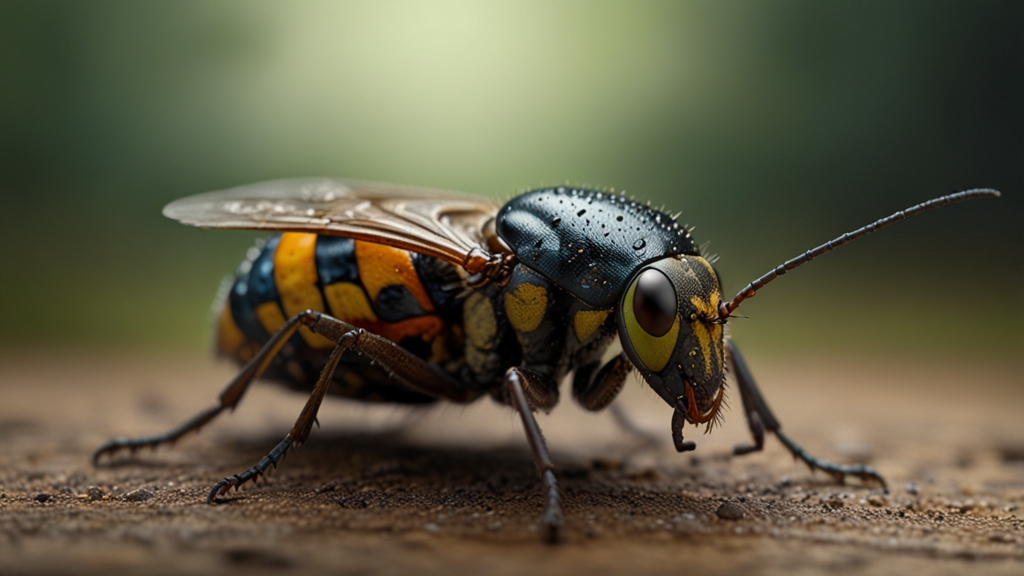The Cultural Significance of Insects: How Bugs Shape Our Beliefs
Insects have fascinated and intrigued human societies for millennia. These tiny yet complex creatures have been woven into the fabric of cultural narratives, spiritual beliefs, and practical traditions. The cultural significance of insects can be seen through various lenses, ranging from mythology and religion to art and symbolism. Despite their small size, insects hold a giant place in the collective human consciousness.
Insects in Mythology and Religion
In many cultures, insects are viewed as sacred beings with spiritual symbolism. Ancient Egyptians, for instance, revered the scarab beetle as a powerful symbol of rebirth and regeneration. The image of the scarab was often used in amulets and funerary art, symbolizing the eternal cycle of life and death.
Similarly, in Chinese culture, crickets are seen as harbingers of good luck and prosperity. They were kept in special cages to appreciate their melodic chirping, which was considered to bring positive energy into homes. The Taoist philosophy also holds the praying mantis in high regard, symbolizing patience and contemplation.
"Insects are not just miniature beings; they are messengers of timeless wisdom, bridging the earthly and the divine."
Insects in Folklore and Superstitions
Folklore and superstitions related to insects provide insight into how different cultures interpret their presence. For example, the presence of a spider is often seen as a sign of good fortune in various traditions. Some believe that a spider descending from the ceiling is a herald of wealth or a visitor bringing good news.
On the other hand, some insects are linked to darker omens. Moths, particularly in Western culture, are sometimes associated with death and the spiritual realm. This belief may arise from their nocturnal nature and their attraction to light, metaphorically representing souls drawn to the afterlife.
Insects in Art and Literature
Insects have also been a rich source of inspiration for artists and writers. The intricate beauty of butterflies and the industrious nature of ants have been subjects of numerous paintings, poems, and stories. Albrecht Dürer’s detailed drawings of a stag beetle exemplify how insects can captivate the imagination of artists, leading them to explore themes of nature’s complexity and balance.
In literature, insects often carry metaphorical weight. Franz Kafka’s "The Metamorphosis" uses the transformation of Gregor Samsa into a giant insect to explore themes of alienation and identity. In Emily Dickinson's poetry, bees frequently appear as symbols of industriousness and the beauty of natural simplicity.
"Through the delicate wings of a butterfly and the persistent march of an ant, we glimpse the intricate tapestry of life and its myriad meanings."
Insects in Modern Culture
Even in contemporary society, insects continue to influence our cultural landscape. The phenomenon of bee-keeping has seen a resurgence, seen not only as a hobby but as a vital ecological practice. Bees are now cultural icons of environmental conservation, representing the delicate interdependence between humans and the natural world.
Additionally, insects such as ladybugs have crossed over into the realm of popular culture and fashion. Their vibrant patterns and colors make them popular motifs in clothing, jewelry, and home décor, symbolizing luck and positivity.
Conclusion
The cultural significance of insects is both vast and varied. They are not merely creatures we encounter in our daily lives but are deeply embedded in our spiritual beliefs, artistic expressions, and cultural traditions. From the ancient mysticism of the scarab to the modern environmental symbolism of bees, insects challenge us to look closer, think deeper, and appreciate the intricate world around us.
"In the smallness of an insect, the vastness of human imagination finds a home."







